POLICE Principle
What is a POLICE Principle?
The POLICE principle is a widely recognized framework used for managing acute injuries, particularly those related to soft tissues like muscles, tendons, and ligaments. The acronym stands for Protection, Optimal Loading, Ice, Compression, and Elevation. Each component plays a crucial role in the initial management and subsequent recovery of an injury.
Treating musculoskeletal injuries with a modernized/modified first aid approach is called the Police Principle.
Traditionally, the acronyms R.I.C.E. (Rest, Ice, Compress, Elevate) and P.R.I.C.E. (Protection, Rest, Ice, Compress, Elevate) have been used to teach the first aid protocol for managing musculoskeletal injuries.
POLICE is an acronym that stands for elevation, ice compression, protection, and optimal loading. In the treatment of acute soft tissue injuries, it encourages and directs safe and efficient loading.
Protection
Protect does not imply permanent immobilization; rather, it highlights the significance of preventing more tissue harm. This could entail carrying out daily activities while actively utilizing crutches to support a lower extremity injury.
Protect may also refer to the proper duration of rest required for the injury to recover.
Optimal Loading
Since bone, tendon, ligament, and muscle all require some stress to promote healing, optimal loading will accelerate the healing process. Mechano-therapy intervention is used to provide optimal loading, and numerous manual approaches can be used at this time. Contrary to popular belief, crutches, braces, and supports—which are typically connected with rest—might play a bigger part in regulating and altering appropriate loading during the initial phases of rehabilitation.
The appropriate level of exercise can aid in edema management. For instance, calf muscle activity at the ankle aids in pushing swelling up the body against gravity. Total relaxation would stop this. Loading might not always be required, such as in cases of severe fractures requiring surgery.
Ice Application
Ice can assist relieve some of the acute pain you may be experiencing and help reduce the swelling around an injured muscle or joint.
Your healthcare practitioner might demonstrate the ideal techniques for applying ice to an injury. You may learn how to construct your own ice pack from them as well.
Compression
Compression is another easy-to-use yet efficient approach to treating acute injuries. It works similarly to ice in that it tries to help lessen inflammation-induced swelling.
Compression can also aid in stopping blood flow if any bleeding is associated with the injury.
Using goods like compression clothing and strapping is the greatest approach to using compression as a technique for managing your injury. Elastic adhesive bandages are the form of strapping that is commonly used to wrap injuries; they are securely wrapped around the joint that is affected.
You mustn’t wrap the bandage too tightly since you don’t want to impede blood flow. Instead, begin wrapping the bandage slightly off-center and to the side of the lesion in either direction.
If enough layers are applied, the bandages can also serve as a cushion between the injury and any other smaller injuries, preventing further damage to any joints while also limiting the range of motion.
Products like Normatec, an inventive compression technique, that relies on compression as the primary pain reduction benefit are referred to as compression garments.
Our compression garments, such as Pro Ice Wrap and Aircast Cryotherapy, include cryotherapy if you’re searching for an affordable yet efficient pain treatment alternative.
Check out our Supports and Braces under ‘Protection’ if you’re searching for a basic brace or support. They feature compression that has been medically engineered for certain injuries, so you’re sure to find something that will assist.
Elevation
The final component of the POLICE principle, elevation, does just what you might anticipate: it elevates the injury.
By ensuring that the injured area has the finest blood supply and circulation possible, this technique also helps to avoid swelling and ensures that the body heals appropriately.
Make an effort to keep the limbs below the torso lifted above the pelvis. It will also be beneficial to manually raise the injury or prop it up against something to support it for extended periods.
Bolster cushions are a handy tool for therapists to keep limbs or other body parts elevated.
How can physiotherapy help?
What kind of protection we can advise your injury needs? To aid in your recovery, we will walk you through transitioning from the protective phase into the best loading or rehabilitation phase. After an accident, basic workouts and movements help your body’s natural healing processes work more efficiently, promoting faster recovery of the injured muscle, ligament, or joint.
Your movement will improve when you return to regular activity, and we will modify your exercises as they heal to guarantee optimal loading.
How to successfully use P.O.L.I.C.E.?
P.O.L.I.C.E. can be incorporated into acute injury management to enhance the prognosis for your rehabilitation and shorten the time it takes to return to normal functioning. Using subject matter experts as early as feasible in the acute phase of injury care is essential to the successful implementation of P.O.L.I.C.E.
The management of acute injuries can be directed by orthopedic PA-Cs, orthopedic surgeons, and physical therapists. The rehabilitation process and the resolution of a patient’s symptoms will happen more quickly the earlier the patient visits the office.
When an injury happens, the therapists and specialists at CAO are here to help you get back on the road to recovery.
Conclusion
Any soft tissue injury, including skeletal muscle injuries, should be treated right away according to the protection, optimal loading, ice, compression, and elevation (P.O.L.I.C.E.) approach. The five metrics require that the bleeding from the injury site be minimized, which justifies the P.O.L.I.C.E concept’s exceptional practicality.
It is recommended to immobilize the patient with a firm or similar adhesive bandage for a short period. During this resting phase, the muscle failure might be reconnected with the scar tissue. Go online and see a doctor to learn more about this disease.
FAQ
What is the POLICE principle?
Treating musculoskeletal injuries with a modernized/modified first aid approach is called the Police Principle. Traditionally, the acronyms R.I.C.E. (Rest, Ice, Compress, Elevate) and P.R.I.C.E. (Protection, Rest, Ice, Compress, Elevate) have been used to teach the first aid protocol for managing musculoskeletal injuries.
What is the POLICE principle for injury?
The medical profession is pushing for a new approach to treating acute injuries that includes protection, optimal loading, cold, compression, and elevation, thanks to evidence-based practice. P.O.L.I.C.E. is another name for this acronym.
What is the POLICE method for a sprained ankle?
POLICE is an acronym that stands for elevation, ice compression, protection, and optimal loading. In the treatment of acute soft tissue injuries, it encourages and directs safe and efficient loading.
REFERENCES
- POLICE Principle. (n.d.). Physiopedia. https://www.physio-pedia.com/POLICE_Principle
- Pt, B. S. (2023, January 12). What Is the P.O.L.I.C.E. Principle? Verywell Health. https://www.verywellhealth.com/the-police-principle-for-acute-sprains-and-strains-2696549
- How to treat a sports injury with POLICE. (n.d.). https://www.physique.co.uk/Buyers-Guides/POLICE-Principle
- Jain, P. (2023, July 27). What Is P.O.L.I.C.E. Principle for Acute Injury? https://www.icliniq.com/articles/first-aid-and-emergencies/police-principle-for-acute-injury
- West, J. (2019, December 3). Why P.O.L.I.C.E is the smart response to sports injuries — Riverside Physiotherapy. Riverside Physiotherapy. https://www.riversidephysio.com/blog/why-the-police-response-can-fix-your-sports-injury

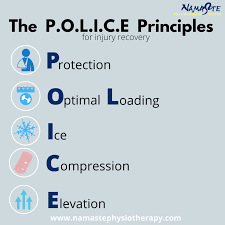
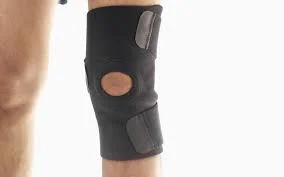

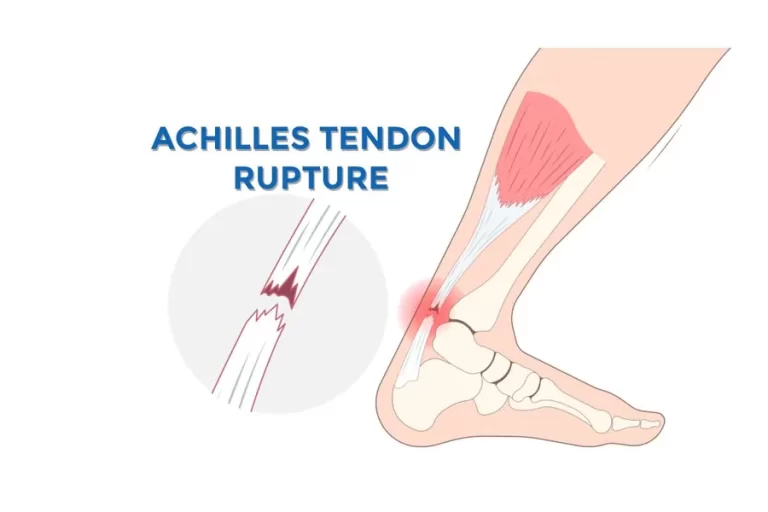
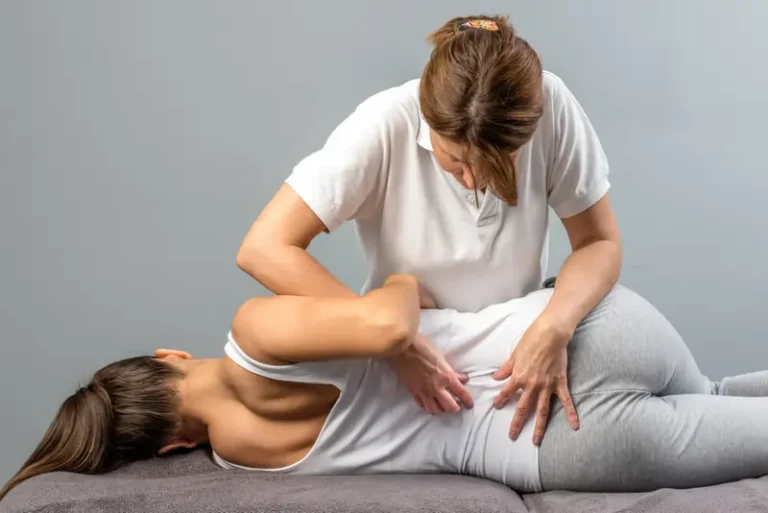

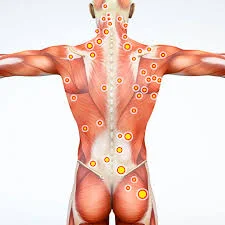
One Comment